2008 Mumbai attacks
From Wikipedia, the free encyclopedia
| 2008 Mumbai Attacks | |
|---|---|
Map of the 2008 Mumbai attacks | |
| Date | 26 November 2008 – 29 November 2008 (IST, UTC +5:30) |
| Attack type | Bombings, shootings, hostage crisis[1] |
| Death(s) | 175 (166 civilians and security personnel and 9 attackers)[2][3] |
| Injured | 308[2] |
| Suspected belligerent(s) | Lashkar-e-Taiba[4][5] |
| ||
| ||
Eight of the attacks occurred in South Mumbai: at Chhatrapati Shivaji Terminus, the Oberoi Trident,[10] the Taj Mahal Palace & Tower,[10] Leopold Cafe, Cama Hospital (a women and children's hospital),[10] the Orthodox Jewish-owned Nariman House,[11] the Metro Cinema,[12] and a lane behind the Times of India building and St. Xavier's College.[10] There was also an explosion at Mazagaon, in Mumbai's port area, and in a taxi at Vile Parle.[13] By the early morning of 28 November, all sites except for the Taj hotel had been secured by Mumbai Police and security forces. An action by India's National Security Guards (NSG) on 29 November (the action is officially named Operation Black Tornado) resulted in the death of the last remaining attackers at the Taj hotel, ending all fighting in the attacks.[14]
Ajmal Kasab,[15] the only attacker who was captured alive, disclosed that the attackers were members of Lashkar-e-Taiba, the Pakistan-based militant organization, considered a terrorist organization by India, the United States, the United Kingdom, the United Nations,[16] among others.[17] The Indian Government said that the attackers came from Pakistan, and their controllers were in Pakistan.[18]
On 7 January 2009, after more than a month of denying the nationality of the attackers,[19] Pakistan's Information Minister Sherry Rehman officially accepted Ajmal Kasab's nationality as Pakistani.[20] On 12 February 2009, Pakistan's Interior Minister Rehman Malik, in a televised news briefing, confirmed that parts of the attack had been planned in Pakistan and said that six people, including the alleged mastermind, were being held in connection with the attacks.[21] A trial court on May 6, 2010 awarded Ajmal Kasab the death sentence on five counts.
Contents[hide] |
[edit] Background
Main article: Terrorism in Mumbai
One of the bomb-damaged coaches at the Mahim station in Mumbai during the 11 July 2006 train bombings
On 6 December 2002, a blast in a BEST bus near Ghatkopar station killed two people and injured 28.[24] The bombing occurred on the tenth anniversary of the demolition of the Babri Mosque in Ayodhya.[25] A bicycle bomb exploded near the Vile Parle station in Mumbai, killing one person and injuring 25 on 27 January 2003, a day before the visit of Prime Minister Atal Bihari Vajpayee of India to the city.[26] On 13 March 2003, a day after the tenth anniversary of the 1993 Bombay bombings, a bomb exploded in a train compartment near the Mulund station, killing 10 people and injuring 70.[27] On 28 July 2003, a blast in a BEST bus in Ghatkopar killed 4 people and injured 32.[28] On 25 August 2003 two bombs exploded in South Mumbai, one near the Gateway of India and the other at Zaveri Bazaar in Kalbadevi. At least 44 people were killed and 150 injured.[29] On 11 July 2006, seven bombs exploded within 11 minutes on the Suburban Railway in Mumbai.[30] 209 people were killed, including 22 foreigners[31] and over 700 injured.[32] According to Mumbai Police, the bombings were carried out by Lashkar-e-Taiba and Students Islamic Movement of India (SIMI).[33][34]
[edit] Attacks
Main article: Timeline of the 2008 Mumbai attacks
[edit] Entry into India
According to investigations the attackers traveled by sea from Karachi, Pakistan across the Arabian Sea, hijacked the Indian fishing trawler 'Kuber', killing the crew of four, and then forced the captain to sail to Mumbai. After killing the captain, the terrorists entered Mumbai on a rubber dinghy. The captain of 'Kuber', Amar Singh Solanki, had earlier been imprisoned for six months in a Pakistani jail for illegally fishing in Pakistani waters.[35] The attackers stayed and were trained by the Lashkar-e-Taiba in a safehouse at Azizabad near Karachi before boarding a small boat for Mumbai.[36]The first events were detailed around 20:00 Indian Standard Time (IST) on 26 November, when 10 men in inflatable speedboats came ashore at two locations in Colaba. They reportedly told local Marathi-speaking fishermen who asked them who they were to "mind their own business" before they split up and headed two different ways. The fishermen's subsequent report to police received little response.[37]
[edit] Attack Sites
[edit] Chhatrapati Shivaji Terminus
The Chhatrapati Shivaji Terminus (CST) was attacked by two gunmen, one of whom, Ajmal Kasab, was later caught alive by the police and identified by eyewitnesses. The attacks began around 21:30 when the two men entered the passenger hall and opened fire,[38] using AK-47 rifles.[39] The attackers killed 58 people and injured 104 others,[39] their assault ending at about 22:45.[3][38] Security forces and emergency services arrived shortly afterwards. The two gunmen fled the scene and fired at pedestrians and police officers in the streets, killing eight police officers. The terrorists passed a police station. Many of the outgunned police officers were afraid to confront the terrorists, and instead switched off the lights and secured the gates. The terrorists headed towards Cama hospital intending to kill patients, but the hospital staff locked all of the patient wards. The two men reached the hospital and attempted to enter the patient wards. They demanded a glass of water from the hospital staff. They asked the man who gave it to them what his religion was, and shot him dead when he said he was a Hindu. When local police arrived, Kasab and Khan threw grenades and shot a police officer dead before fleeing. A team of the Mumbai Anti-Terrorist Squad led by Police chief Hemant Karkare searched the Chhatrapati Shivaji Terminus and then headed out in pursuit of Kasab and Khan. Kasab and Khan opened fire on the pursuing vehicle, and the police returned fire. Karkare and four of his officers were killed, and the only survivor was wounded. However, the terrorists ran into a police roadblock, which had been set up after the wounded police officer radioed for help, leading to a gun battle in which Khan was killed, and Kasab was wounded. Kasab struggled with police as they arrested him.[edit] Leopold Cafe
The Leopold Cafe, a popular restaurant and bar on Colaba Causeway in South Mumbai, was one of the first sites to be attacked.[40] Two attackers opened fire on the cafe on 26 November night, killing at least 10 people (including some foreigners), and injuring many more.[41] The terrorists fired into the street as they fled the scene.[edit] Bomb blasts in taxis
There were two explosions in taxis caused by timer bombs. The first one occurred at 22:40 at Vile Parle, killing the driver and a passenger. The second explosion took place at Wadi Bunder between 22:20 and 22:25. Three people including the driver of the taxi were killed, and about 15 other people were injured.[13][42][edit] Taj Mahal Hotel and Oberoi Trident
Main articles: Taj Mahal Palace & Tower and Oberoi Trident
Two hotels, the Taj Mahal Palace & Tower and the Oberoi Trident, were amongst the four locations targeted. Six explosions were reported at the Taj hotel and one at the Oberoi Trident.[43][44] At the Taj Mahal, firefighters rescued 200 hostages from windows using ladders during the first night.
CNN initially reported on the morning of the 27 November 2008 that the hostage situation at the Taj had been resolved and quoted the police chief of Maharashtra stating that all hostages were freed;[45] however, it was learned later that day that there were still two attackers holding hostages, including foreigners, in the Taj Mahal hotel.[46]
During the attacks, both hotels were surrounded by Rapid Action Force personnel and Marine Commandos (MARCOS) and National Security Guards (NSG) commandos.[47][48] When reports emerged that attackers were receiving television broadcasts, feeds to the hotels were blocked.[49] All attackers were out of the Taj Mahal and Oberoi hotels by the early morning of 29 November.[50][51] Major Sandeep Unnikrishnan of the NSG lost his life as a result of a gun shot during the evacuation of Commando Sunil Yadav who was hit in the leg by a bullet during the rescue operations at Taj.[52][53]
A number of European Parliament Committee on International Trade delegates were staying in the Taj Mahal hotel when it was attacked,[54] but none of them were injured.[55] British Conservative Member of the European Parliament (MEP) Sajjad Karim (who was in the lobby when attackers initially opened fire there) and German Social Democrat MEP Erika Mann were hiding in different parts of the building.[56] Also reported present was Spanish MEP Ignasi Guardans, who was barricaded in a hotel room.[57] Another British Conservative MEP, Syed Kamall, reported that he along with several other MEPs left the hotel and went to a nearby restaurant shortly before the attack.[56] Kamall also reported that Polish MEP Jan Masiel was thought to have been sleeping in his hotel room when the attacks started, but eventually left the hotel safely.[58] Kamall and Guardans reported that a Hungarian MEP's assistant was shot.[56][59] Also caught up in the shooting were the President of Madrid, Esperanza Aguirre, while checking in at the Oberoi Trident,[59] and Indian MP N. N. Krishnadas of Kerala and Sir Gulam Noon while having dinner at a restaurant in the Taj hotel.[60][61]
[edit] Nariman House
Main article: Nariman House
Nariman House, a Chabad Lubavitch Jewish center in Colaba known as the Mumbai Chabad House, was taken over by two attackers and several residents were held hostage.[62] Police evacuated adjacent buildings and exchanged fire with terrorists, wounding one. Local residents were told to stay inside. Terrorists threw a grenade into a nearby lane, causing no casualties. NSG commandos arrived from Delhi, and a Naval helicopter took an aerial survey. During the first day, 9 hostages were rescued from the first floor. The following day, the house was stormed by NSG commandos fast-roping from helicopters onto the roof, covered by snipers positioned in nearby buildings. After a long battle, one NSG commando and both terrorists were killed.[63] Rabbi Gavriel Holtzberg and his wife Rivka Holtzberg, who was six months pregnant, were murdered with other hostages inside the house by the attackers.[64][edit] End of the attacks
By the morning of 27 November, the army had secured the Jewish outreach center at Nariman House as well as the Oberoi Trident hotel. They also incorrectly believed that the Taj Mahal Palace and Towers had been cleared of attackers, and soldiers were leading hostages and holed-up guests to safety, and removing bodies of those killed in the attacks.[65][66][67] However, later news reports indicated that there were still two or three attackers in the Taj, with explosions heard and gunfire exchanged.[67] Fires were also reported at the ground floor of the Taj with plumes of smoke arising from the first floor.[67] The final operation at the Taj Mahal Palace hotel was completed by the NSG commandos at 08:00 on 29 November, killing three attackers and resulting in the conclusion of the attacks.[68] The security forces rescued 250 people from the Oberoi, 300 from the Taj and 60 people (members of 12 different families) from Nariman House.[69] In addition, police seized a boat filled with arms and explosives anchored at Mazgaon dock off Mumbai harbour.[70][edit] Method
The attackers had planned the attack several months ahead of time and knew some areas well enough for the attackers to vanish, and reappear after security forces had left. Several sources have quoted Kasab telling the police that the group received help from Mumbai residents.[71][72] The attackers used at least three SIM cards purchased on the Indian side of the border with Bangladesh, pointing to some local collusion.[73] There were also reports of one SIM card purchased in New Jersey, USA.[74] Police had also mentioned that Faheem Ansari, an Indian Lashkar operative who had been arrested in February 2008, had scouted the Mumbai targets for the November attacks.[75] Later, the police arrested two Indian suspects, Mikhtar Ahmad, who is from Srinagar in Kashmir, and Tausif Rehman, a resident of Kolkata. They supplied the SIM cards, one in Calcutta, and the other in New Delhi.[76]Type 86 Grenades made by China's state-owned Norinco were used in the attacks.[77]
Blood tests on the attackers indicate that they had taken cocaine and LSD during the attacks, to sustain their energy and stay awake for 50 hours. Police say that they found syringes on the scenes of the attacks. There were also indications that they had been taking steroids.[78] The gunman who survived said that the attackers had used Google Earth to familiarise themselves with the locations of buildings used in the attacks.[79]
[edit] Attribution
Main article: Attribution of the 2008 Mumbai attacks
The Mumbai attacks were planned and directed by Lashkar-e-Taiba militants inside Pakistan, and carried out by ten young armed men trained and sent to Mumbai and directed from inside Pakistan via mobile phones and VoIP.[17][80][81]
In July 2009 Pakistani authorities confirmed that LeT plotted and financed the attacks from LeT camps in Karachi and Thatta.[82] In November 2009, Pakistani authorities charged seven men they had arrested earlier, of planning and executing the assault.[83]
Mumbai police originally identified 37 suspects –-including two army officers-– for their alleged involvement in the plot. All but two of the suspects, many of whom are identified only through aliases, are Pakistani.[84] Two more suspects arrested in the United States in October 2009 for other attacks were also found to have been involved in planning the Mumbai attacks.[85][86] One of these men, Pakistani American David Headley, was found to have made several trips to India before the attacks and gathered video and GPS information on behalf of the plotters.
[edit] Cooperation with Pakistan
Pakistan initially contested that Pakistanis were responsible for the attacks, blaming plotters in Bangladesh and Indian criminals,[87] a claim rubbished by India,[88] and saying they needed information from India on other bombings first.[89]Pakistani authorities finally agreed the attackers were Pakistani on 7 January 2009,[19][90][91] and registered a case against three Pakistani nationals.[92]
The Indian government supplied evidence to Pakistan and other governments, in the form of interrogations, weapons, and call records of conversations during the attacks.[4][93] In addition, Indian government officials said that the attacks were so sophisticated that they must have had official backing from Pakistani "agencies", an accusation denied by Pakistan.[81][90]
Under U.S. and U.N. pressure, Pakistan arrested a few members of Jamaat ud-Dawa and briefly put its founder under house arrest, but he was found to be free a few days later.[94] A year after the attacks, Mumbai police continued to complain that Pakistani authorities are not cooperating by providing information for their investigation.[95] Meanwhile, journalists in Pakistan said security agencies were preventing them from interviewing people from Kasab's village.[96][97] Home Minister P. Chidambaram said the Pakistani authorities had not shared any information about American suspects Headley and Rana, but that the FBI had been more forthcoming.[98]
[edit] Attackers
There were ten gunmen, nine of whom were subsequently shot dead and one captured by security forces.[99][100] Witnesses reported that they looked to be in their early twenties, wore black t-shirts and jeans, and that they smiled and looked happy as they shot their victims.[101]It was initially reported that some of the attackers were British citizens,[102][103] but the Indian Government later stated that there was no evidence to confirm this.[104] Similarly, early reports of twelve gunmen[105] were also later shown to be incorrect.[4]
On 9 December, the ten attackers were identified by Mumbai police, along with their home towns in Pakistan: Ajmal Amir from Faridkot, Abu Ismail Dera Ismail Khan from Dera Ismail Khan, Hafiz Arshad and Babr Imran from Multan, Javed from Okara, Shoaib from Narowal, Nazih and Nasr from Faisalabad, Abdul Rahman from Arifwalla, and Fahad Ullah from Dipalpur Taluka. Dera Ismail Khan is in the North-West Frontier Province; the rest of the towns are in Pakistani Punjab.[106]
On April 6, 2010; the Home minister of Maharashtra State, which includes Mumbai, informed the assembly that the bodies of the 9 killed Pakistani gunmen from the 2008 attack on Mumbai were buried in a secret location in January 2010. The bodies had been in the mortuary of a Mumbai hospital after Muslim clerics in the city refused to let them be buried on their grounds.[107]
[edit] Arrests
Main article: Ajmal Kasab
Ajmal Kasab was the only attacker captured alive by police and is currently under arrest.[108] Much of the information about the attackers' preparation, travel, and movements comes from his confessions to the Mumbai police.[109]On 12 February 2009 Pakistan's Interior Minister Rehman Malik said that Pakistani national Javed Iqbal, who acquired VoIP phones in Spain for the Mumbai attackers, and Hamad Ameen Sadiq, who had facilitated money transfer for the attack, had been arrested.[92] Two other men known as Khan and Riaz, but whose full names were not given, were also arrested.[110] Two Pakistanis were arrested in Brescia, Italy on 21 November 2009, after being accused of providing logistical support to the attacks.[111]
In October 2009, two Chicago men were arrested and charged by the FBI for involvement in terrorism abroad, David Coleman Headley and Tahawwur Hussain Rana. Headley, a Pakistani-American, was charged in November 2009 with scouting locations for the 2008 Mumbai attacks.[112][113] Headley is reported to have posed as an American Jew and is believed to have links with terrorist outfits based in Bangladesh.[114] On March 18, 2010, Headley plead guilty to a dozen charges against him thereby avoiding going to trial.
In December 2009, the FBI charged Abdur Rehman Hashim Syed, a retired major in the Pakistani army, for planning the terror attacks in association with Headley.[115]
On January 15, 2010, in a successful snatch operation R&AW agents nabbed Sheikh Abdul Khwaja, one of the handlers of the 26/11 attacks, chief of HuJI India operations and a most wanted terror suspect in India, from Colombo, Sri Lanka and brought him over to Hyderabad, India for formal arrest.[116]
On May 6, 2010 Ajmal Kasab was sentenced to be hanged to death on charges of murder and waging war on India.[117]
[edit] Casualties and compensation
Main article: Casualties of the 2008 Mumbai attacks
At least 166 victims (civilians and security personnel) and 9 attackers were killed in the attacks. Among the dead were 28 foreign nationals from 10 countries.[2][3][45][118][119][120] One attacker was captured.[121] The bodies of many of the dead hostages showed signs of torture or disfigurement.[122] A number of those killed were notable figures in business, media, and security services.[123][124][125]The Government of Maharashtra announced about $10,000 as compensation to the kin of each of those killed in the terror attacks and about $1,000 to the seriously injured.[126] In August 2009, Indian Hotels Company and the Oberoi Group received about $28 million as part-payment of the insurance claims, on account of the attacks on Taj Mahal and Trident, from General Insurance Corporation of India.[127]
[edit] Aftermath
Main article: Aftermath of the 2008 Mumbai attacks
The attacks are commonly referred to in India as "26/11", after the date in 2008 that they began. A commission of inquiry appointed by the Maharashtra state government produced a report that was tabled before the assembly over one year after the events. The report said the "war-like" attack was beyond the capacity of any police force, but it also found fault with the city Police Commissioner's lack of leadership during the crisis.[128]
The Maharashtra state government has planned to buy 36 speed boats to patrol the coastal areas and several helicopters for the same purpose. It will also create an anti-terror force called "Force One" and upgrade all the weapons that Mumbai police currently have.[129] Prime Minister Dr. Manmohan Singh on an all party conference declared that legal framework will be strengthened in the battle against terrorism and a federal anti-terrorist intelligence and investigation agency, like the FBI, will be set up soon to co-ordinate actions against terrorism.[130] Government strengthened Anti terror laws by UAPA 2008, and federal National Investigating Agency was formed.
The attacks have damaged India's already strained relationship with Pakistan. External Affairs Minister Pranab Mukherjee declared that India may indulge in military strikes against terror camps in Pakistan to protect its territorial integrity. There were also after-effects on the United States's relationships with both countries,[131] the US-led NATO war in Afghanistan,[132] and on the Global War on Terror.[133] According to Interpol secretary general Ronald Noble, Indian intelligence agencies did not share any information with them.[134] However, FBI chief Robert Mueller praised the "unprecedented cooperation" between American and Indian intelligence agencies over Mumbai terror attack probe.[135]
[edit] Movement of Troops
The Pakistan Government moved troops towards the India-Pakistan border voicing concerns about the Indian Government's possible plans to launch attacks on Pakistani soil after 26/11 if Pakistan Government did not cooperate, but after days of talks, the Pakistan Government decided to start moving troops away from the border.[136][edit] Reactions
Main article: Reactions to the 2008 Mumbai attacks
Indians criticised their political leaders after the attacks, saying that their ineptness was partly responsible. The Times of India commented on its front page that "Our politicians fiddle as innocents die."[137] Political reactions in Mumbai and India included a range of resignations and political changes, including the resignations of Minister for Home Affairs, Shivraj Patil,[138] Chief Minister of Maharashtra, Vilasrao Deshmukh,[139] and Deputy Chief Minister of Maharastra R. R. Patil.[140] Prominent Muslim personalities such as Bollywood actor Aamir Khan appealed to the community members in the country to observe Eid al-Adha as a day of mourning on 9 December 2008.[141] The business establishment also reacted, with changes to transport, and requests for an increase in self-defense capabilities.[142] The attacks also triggered a chain of citizens' movements across India such as the India Today Group's "War Against Terror" campaign. There were vigils held across all of India with candles and placards commemorating the victims of the attacks.[143] The NSG commandos based in Delhi also met criticism for taking 10 hours to reach the terrorists.[144][145]
International reaction for the attacks was widespread, with many countries and international organizations condemning the attacks and expressing their condolences to the civilian victims. Many important personalities around the world also condemned the attacks.[146] Outgoing US President George W. Bush said "We pledge the full support of the United States as India investigates these attacks, brings the guilty to justice and sustains its democratic way of life."[147] Likewise, a spokesman for then President-elect Barack Obama said that Mr. Obama “strongly condemns today’s terrorist attacks in Mumbai, and his thoughts and prayers are with the victims, their families, and the people of India.“[148]
Media coverage highlighted the use of new media and Internet social networking tools, including Twitter and Flickr, in spreading information about the attacks. In addition, many Indian bloggers and Wikipedia offered live textual coverage of the attacks.[149] A map of the attacks was set up by a web journalist using Google Maps.[150][151] The New York Times, in July 2009, described the event as "what may be the most well-documented terrorist attack anywhere."[152]
[edit] Kasab's trial
Kasab's trial was delayed due to legal issues, as many Indian lawyers were unwilling to represent him. A Mumbai Bar Association passed a resolution proclaiming that none of its members would represent Kasab. However, the Chief Justice of India stated that Kasab needed a lawyer for a fair trial. A lawyer for Kasab was eventually found, but was replaced due to a conflict of interest. On 25 February 2009, Indian investigators filed an 11,000-page Chargesheet, formally charging Kasab with murder, conspiracy, and waging war against India among other charges. Kasab's trial began on 6 May 2009. He initially pleaded not guilty, but later admitted his guilt on 20 July 2009. He initially apologized for the attacks and claimed that he deserved the death penalty for his crimes, but later retracted these claims, saying that he had been tortured by police to force his confession, and that he had been arrested while roaming the beach. The court had accepted his plea, but due to the lack of completeness within his admittance, the judge had deemed that many of the 86 charges were not addressed and therefore the trial continued. Kasab could, and will almost certainly, be hanged if given the maximum penalty of death.[153] Kasab was convicted of all 86 charges on 3 May 2010. He was found guilty of murder for directly killing seven people, conspiracy to commit murder for the deaths of the 166 people killed in the three-day terror siege, waging war against India, causing terror, and of conspiracy to murder two high-ranking police officers. On 6 May 2010, he was sentenced to death by hanging.[154] [155] [156][edit] Trials in Pakistan
Indian and Pakistani police have exchanged DNA evidence, photographs and items found with the attackers to piece together a detailed portrait of the Mumbai plot. Police in Pakistan have arrested seven people, including Hammad Amin Sadiq, a homeopathic pharmacist, who arranged bank accounts and secured supplies, and he and six others begin their formal trial on 3 Oct 2009 in Pakistan, though Indian authorities say the prosecution stops well short of top Lashkar leaders.[157] In November 2009, Indian Prime Minister Manmohan Singh said that Pakistan has not done enough to bring the perpetrators of the attacks to justice.[158]On the eve of the first anniversary of 26/11, a Pakistani anti-terror court has formally charged seven accused, including LeT operations commander Zaki ur Rehman Lakhvi.
[edit] Locations
All the incidents except the explosion at Vile Parle took place in downtown South Mumbai.- Oberoi Trident at Nariman Point; 18°55′38″N 72°49′14″E / 18.927118°N 72.820618°E
- Taj Mahal Palace & Tower near the Gateway of India; 18°55′18″N 72°50′00″E / 18.921739°N 72.83331°E
- Leopold Cafe, a popular tourist restaurant in Colaba; 18°55′20″N 72°49′54″E / 18.922272°N 72.831566°E
- Chhatrapati Shivaji Terminus (CST) railway station; 18°56′26″N 72°50′11″E / 18.940631°N 72.836426°E (express train terminus), 18°56′26″N 72°50′07″E / 18.94061°N 72.835343°E (suburban terminus)
- Badruddin Tayabji Lane behind the Times of India building.18°56′32″N 72°50′01″E / 18.942117°N 72.833734°E
- Near St. Xavier's College 18°56′38″N 72°49′55″E / 18.943919°N 72.831942°E.
- Cama and Albless Hospital; 18°56′34″N 72°49′59″E / 18.94266°N 72.832993°E
- Nariman House (Chabad House) Jewish outreach center; 18°54′59″N 72°49′40″E / 18.916517°N 72.827682°E
- Metro Cinema 18°56′35″N 72°49′46″E / 18.943178°N 72.829474°E
- Mazagaon docks in Mumbai's port area;
- Vile Parle near the airport

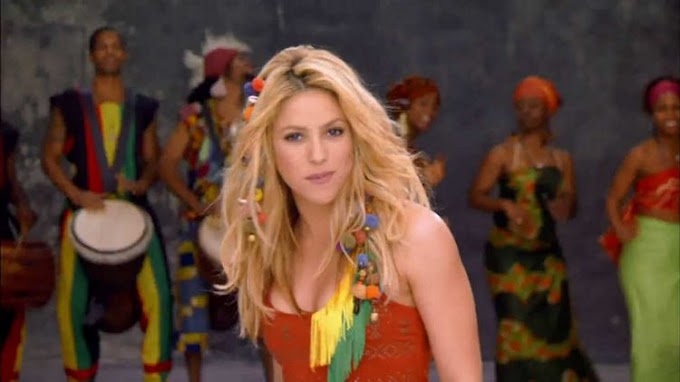
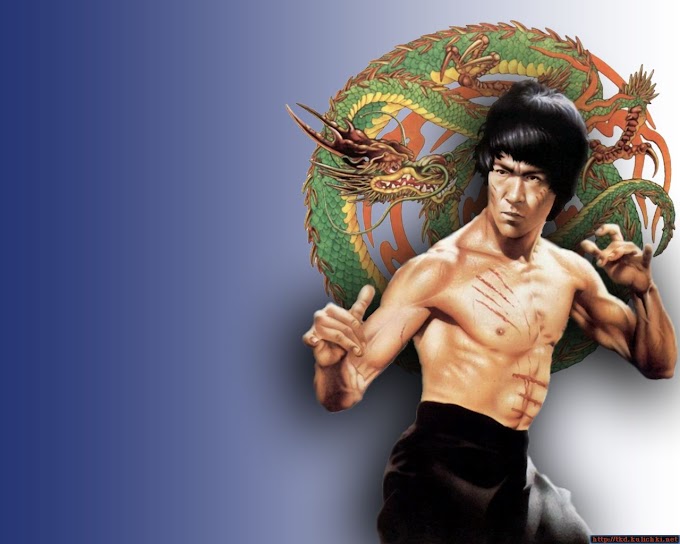
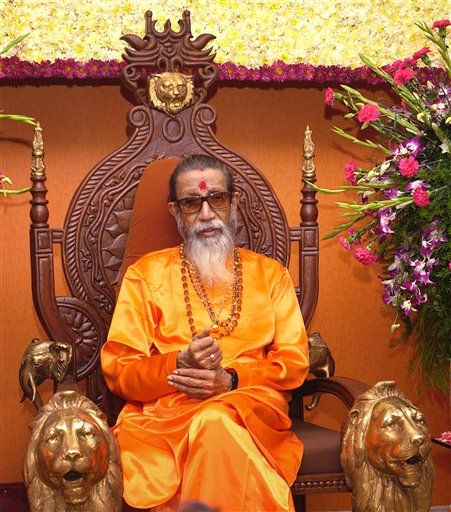
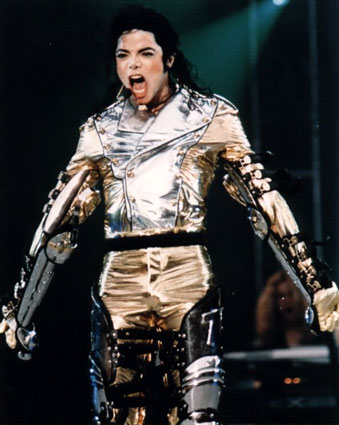
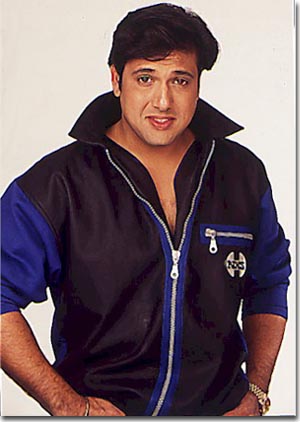


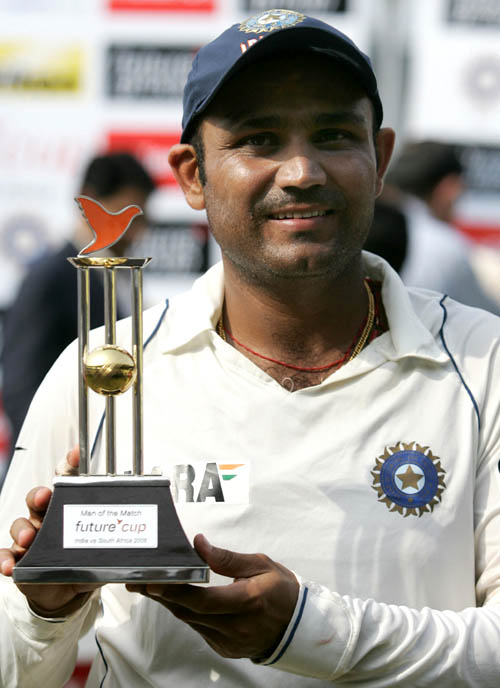

0 Comments